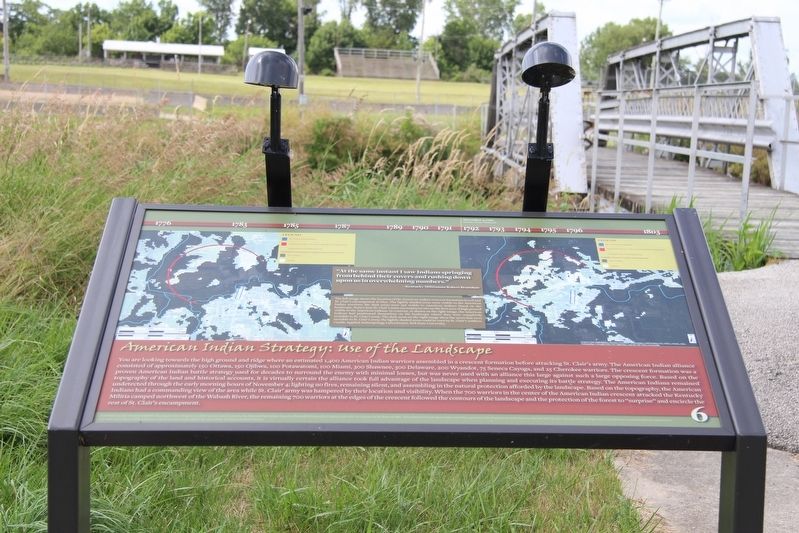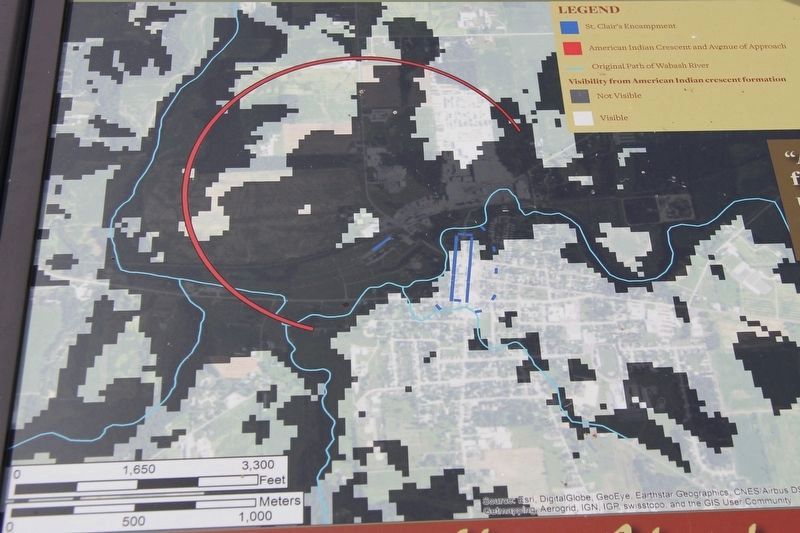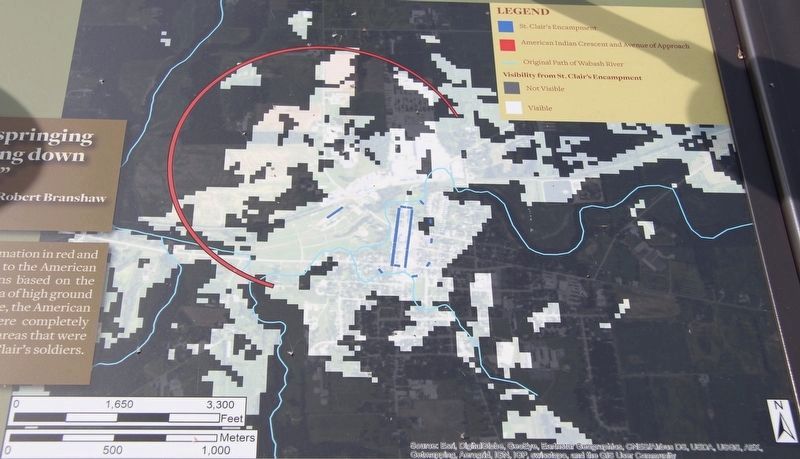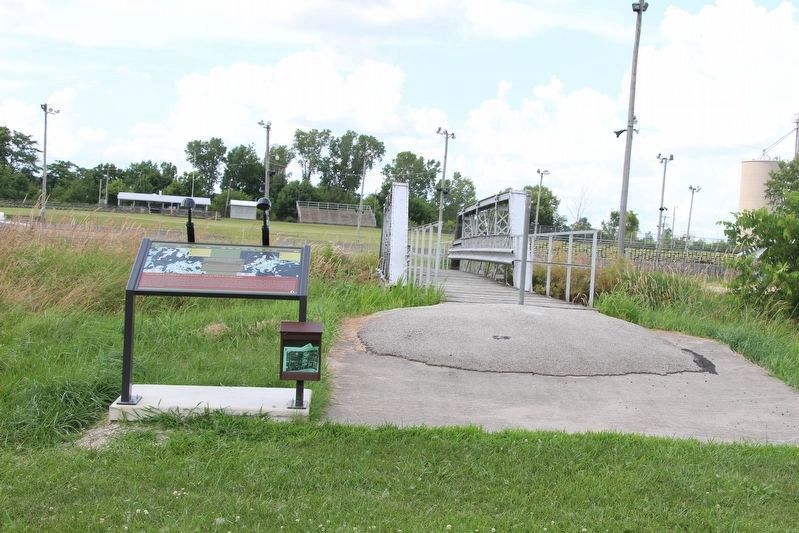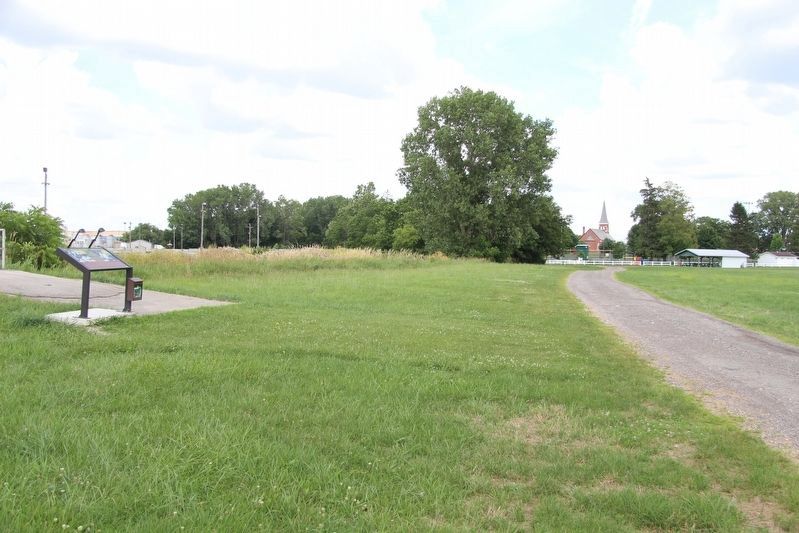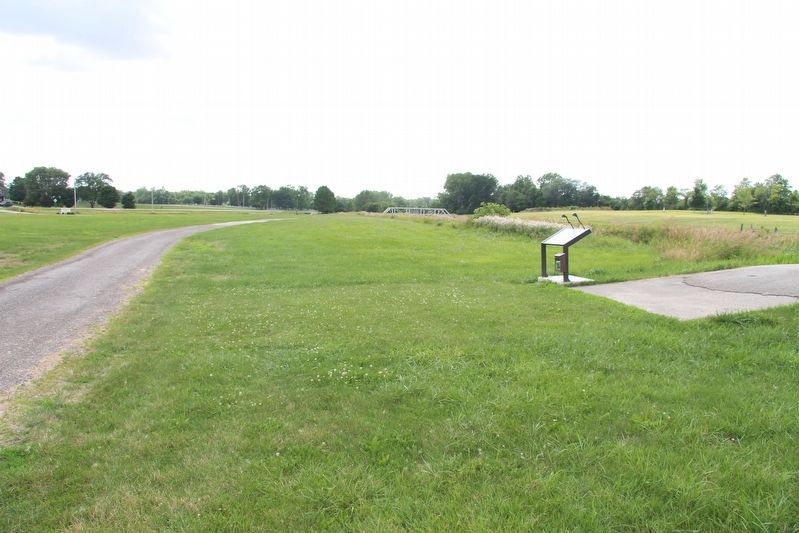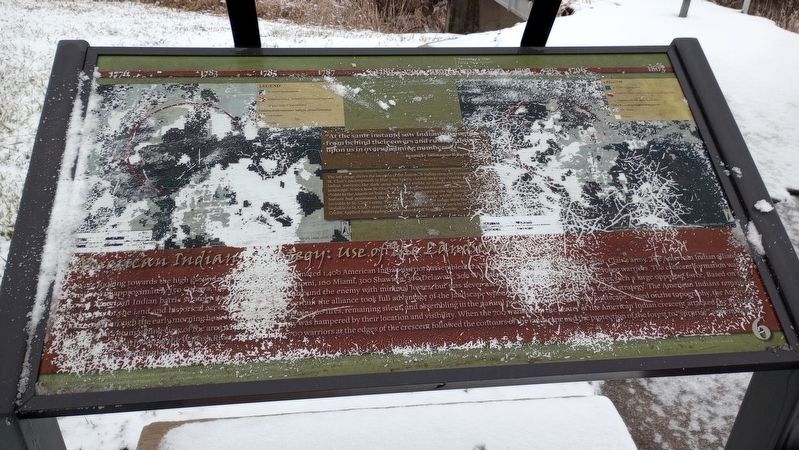Fort Recovery in Mercer County, Ohio — The American Midwest (Great Lakes)
American Indian Strategy: Use of the Landscape
Inscription.
Bottom panel of text:
You are looking towards the high ground and ridge where an estimated 1,400 American Indian warriors assembled in a crescent formation before attacking St. Clair's army. The American Indian alliance consisted of approximately 150 Ottawa, 150 Ojibwa, 100 Potawatomi, 100 Miami, 300 Shawnee, 300 Delaware, 200 Wyandot, 75 Seneca Cayuga, and 25 Cherokee warriors. The crescent formation was a proven American Indian battle strategy used for decades to surround the enemy with minimal losses, but was never used with an alliance this large against such a large opposing force. Based on the topography of the land and historical accounts, it is virtually certain the alliance took full advantage of the landscape when planning and executing its battle strategy. The American Indians remained undetected through the early morning hours of November 4; lighting no fires, remaining silent, assembling in the natural protection afforded by the landscape. Based on the topography, the American Indians had a commanding view of the area while St. Clair's army was hampered by their location visibility. When the 700 warriors in the center of the American Indian crescent attacked the Kentucky Militia camped northwest of the Wabash River, the remaining 700 warriors at the edges of the crescent followed the contours of the landscape and the protection of the forest to "surprise" and encircle the rest of St. Clair's encampment.
Middle-center panel of text:
The left image shows the location of the American Indian crescent formation in red and St. Clair's encampment in blue. The lightly shaded areas were visible to the American Indian warriors: the dark areas were not visible to American Indians based on the landscape. Notice how St. Clair's main encampment sits on the first area of high ground visible to the American Indians. In contrast, as shown on the right image, the American Indians had positioned themselves on the landscape where they were completely invisible to St. Clair's army. The dark areas on the right image show the areas that were invisible to St. Clair's army: the lightly shaded areas could be seen St. Clair's n soldiers. Credit: Applied Anthropology Laboratories, Ball State University.
Erected by National Park Service American Battlefield Protection Program and the State of Ohio. (Marker Number 6.)
Topics. This historical marker is listed in these topic lists: Anthropology & Archaeology • Environment • Native Americans • Wars, US Indian. A significant day of the year for for this entry is November 4.
Location. 40° 24.87′ N, 84° 47.08′ W. Marker is in Fort Recovery
, Ohio, in Mercer County. Marker is on Fort Site Street near West Boundary Street, on the right when traveling south. This marker is located just outside of the park that is part of the Fort Recovery state historic site. More specifically, it is located a short walking distance west of the park, along the parkside shoreline of the Wabash River, and next to a pedestrian bridge that crosses the river. Touch for map. Marker is at or near this postal address: 1 Fort Site Street, Fort Recovery OH 45846, United States of America. Touch for directions.
Other nearby markers. At least 8 other markers are within walking distance of this marker. Kentucky Militia Encampment (about 500 feet away, measured in a direct line); The Battlefield (about 800 feet away); American Indian Tribes (about 800 feet away); On Christmas Day 1793 (approx. 0.2 miles away); The Battle of Fort Recovery (approx. 0.2 miles away); On This Triangle of Land (approx. 0.2 miles away); The Old Wabash River (approx. 0.2 miles away); The Wabash (Ouabache) River (approx. 0.2 miles away). Touch for a list and map of all markers in Fort Recovery.
Credits. This page was last revised on January 12, 2024. It was originally submitted on August 3, 2019, by Dale K. Benington of Toledo, Ohio. This page has been viewed 211 times since then and 15 times this year. Photos: 1, 2, 3, 4, 5, 6. submitted on August 3, 2019, by Dale K. Benington of Toledo, Ohio. 7. submitted on January 8, 2024, by Craig Doda of Napoleon, Ohio.
